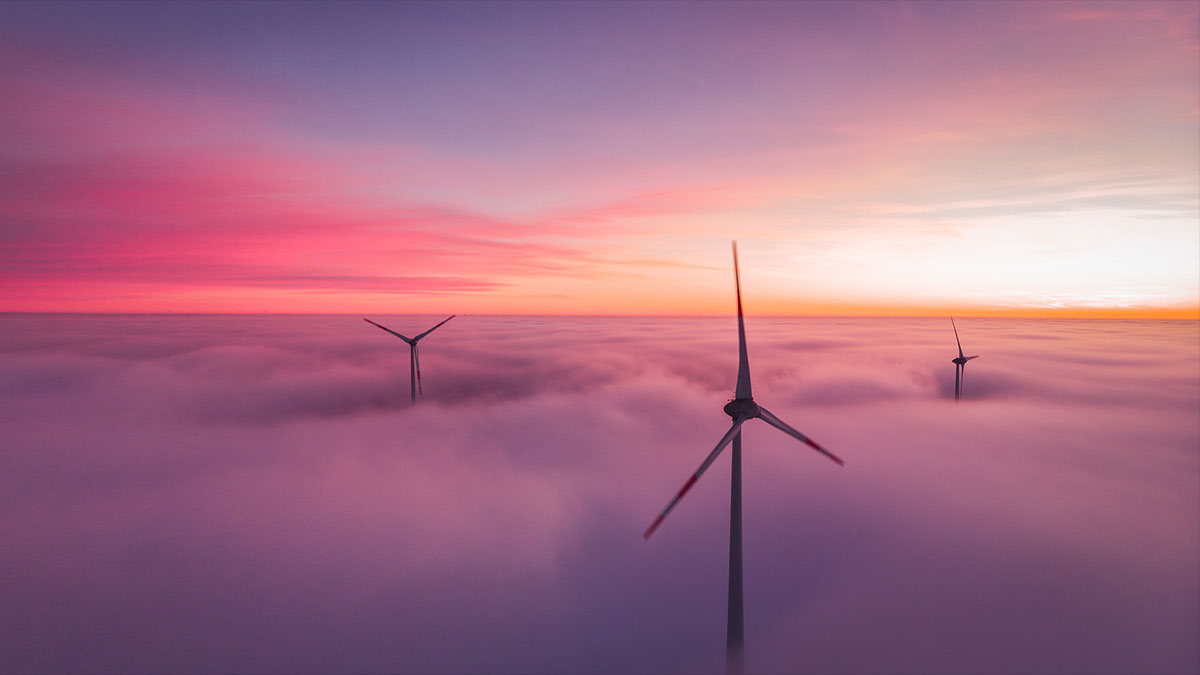the new wind power mantra: bigger is better

At some point, it was inevitable that a growing civilization would have to stop burning dead plant matter for fuel and turn to the immense energies created by winds, oceans, and stars. While the exact technologies are still being figured out, many of the world’s largest companies and their financial backers are placing more and more bets on transitioning to renewable energy, and wind plays a significant role in the new mix. It might be one of the easiest forms of green power to turn directly into electricity but it’s not exactly that predictable, and its capacity varies widely by season and location. Even the most windswept plains on the planet don’t have incessant gales all year round.
Enter offshore wind power. With no mountains to block breezes and more predictable, steady winds, shallow coastal areas and slightly deeper waters offer steadier energy generation and let engineers build much larger turbines. And with almost 2 in 5 people living within some 62 miles, or 100 kilometers from the nearest coast, the logistics of actually delivering the resulting energy are relatively straightforward and quite efficient. Of course, offshore wind power isn’t a panacea. Salt water damages equipment and turbines can be difficult to install, especially in deeper water where they have to float, anchored to the sea floor rather than built on a solid foundation, which is in part why offshore wind was more expensive than its onshore counterpart.
Now, the industry appears to have settled on a rather simple solution. Instead of just trying to build larger farms, they’ll build bigger turbines. Much bigger. Forget the typical 20 to 25 story tall windmills you see driving down highways and imagine structures reaching nearly 80 stories, on par with one of the skyscrapers you’d see towering over New York City, Shenzhen, or Dubai. A single one of these monsters could power as many as 12,000 homes, meaning operators get a lot more bang for their buck. This logic is kick-starting an international competition between the makers of wind turbines to find the maximum viable size of an offshore device, and currently, no one is sure exactly how large they’ll get.
That said, they’re probably not going to be the biggest structures on Earth because something comparable to the current tallest skyscraper, the Burj Khalifa, a 163 story, 830 meter tall spire of glass and concrete, is going to be extremely difficult to build and anchor out at sea, and molding the estimated 340 meter blades will require composite materials that have rarely, if ever, been employed at such scale. Likewise, a major city of about a million people demands output levels between one and four gigawatts, meaning that a wind farm hoping to power Austin, TX or San Diego, CA would need to have between 71 and 285 of the largest turbines we could currently build, and these numbers are unlikely to get more than 30% lower, realistically speaking.
Yet that’s not necessarily a problem in and of itself. Offshore wind farms are supposed to be part of a robust, diverse energy mix, combined with tidal power, solar, geothermal, hydro, and even nuclear power, along with new batteries capable of running entire neighborhoods after storing excess energy generated throughout the day. So, it’s actually encouraging to see companies like GE, Vestas, and Siemens experimenting with optimal turbine sizes and designs for wind farms of the future. According to industry figures, the U.S. alone has two petawatts of offshore wind energy there for the taking, twice what the whole country needs to function. Not tapping that potential as much as possible would be just plain wasteful.





